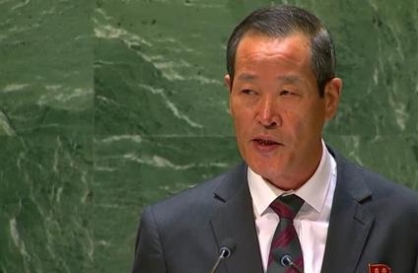Dutch design and architecture showcased in Seoul
Korea Foundation show highlights key trends in design, architecture from global design leaders
By Lee Woo-youngPublished : Aug. 13, 2013 - 20:06
Dutch architecture and design have played a leading role in the global scene with their functional yet playful qualities. Dubbed “the world’s largest artificial paradise,” the Netherlands has developed distinctive architectural and design styles in battling floods and other natural disasters as much of its land is below sea level.
The key architectural and design qualities of the Netherlands can be seen in Seoul at a new special exhibition put together by the Korea Foundation, the state-funded agency that promotes cultural exchanges between Korea and other countries.
“A New Message from the Netherlands: Dutch Architecture and Design,” starting Wednesday, showcases some recent trends in Dutch architecture and design, through a number of innovative examples.
“What the Dutch made is very engaged with reality (because of their geographical features). And that has built a unique identity in architecture and design that has begun to come under the global spotlight since the 1990s,” said Lee Jae-jun, curator of the exhibition and also a director of Next Community Research Institute, an architecture research group.
Two of the show’s five sections are devoted to examining Dutch architecture with photos of 12 architectural works on display, all considered innovative in renovation and construction.
The Stedelijk Museum of Amsterdam, a modern art museum, is an outstanding example. The museum underwent eight years of renovation to complete the new building that is now connected to the old one. The new hall that looks like a giant bathtub has made the museum a city landmark.
The key architectural and design qualities of the Netherlands can be seen in Seoul at a new special exhibition put together by the Korea Foundation, the state-funded agency that promotes cultural exchanges between Korea and other countries.
“A New Message from the Netherlands: Dutch Architecture and Design,” starting Wednesday, showcases some recent trends in Dutch architecture and design, through a number of innovative examples.
“What the Dutch made is very engaged with reality (because of their geographical features). And that has built a unique identity in architecture and design that has begun to come under the global spotlight since the 1990s,” said Lee Jae-jun, curator of the exhibition and also a director of Next Community Research Institute, an architecture research group.
Two of the show’s five sections are devoted to examining Dutch architecture with photos of 12 architectural works on display, all considered innovative in renovation and construction.
The Stedelijk Museum of Amsterdam, a modern art museum, is an outstanding example. The museum underwent eight years of renovation to complete the new building that is now connected to the old one. The new hall that looks like a giant bathtub has made the museum a city landmark.

According to Lee, it’s an example of preserving the old building, constructed in 1874, as well as updating the whole look with the new building, which opened in 2012.
“The message for people, especially Koreans, is that it enabled the old building to be in use again and added a modern look to the museum. Koreans are used to demolishing old buildings and raising new ones,” he said.
More examples of such buildings are organized in the section named “Re:Use.”
Another section “Re:Search” shows, through infographic design charts, how statistics have affected the Dutch who live on flood-prone land.
The design part highlights 12 actions for the primary purposes of design products.
“There are thousands of different designs for a chair. But their purpose is for sitting,” Lee said.
It also features conceptual works that blur the boundaries between art and design.
“Design has been traditionally for making a visually appealing end product, but in this exhibition, we are focusing on artistic qualities of products that often go on exhibit at museums and galleries and are sold by collectors,” Lee said.
Dutch design has been defined as not only functional but also playful, as represented in Droog design, a design movement that values its link with society.

A unique design work on view is two chairs that are connected by a long white paper, called “Whispering Chairs.” People sitting 5 meters apart at the two ends can hear each other talk.
“Messages are not clearly delivered between people. Some messages die out. But the work shows that through an effective scheme, a message can be heard clearly,” Lee explained.
The exhibition runs from Wednesday to Oct. 30 at the Korea Foundation Gallery in Suha-dong, Seoul.
Lectures on Dutch design and architecture will be given by a design professor from Delft University of Technology on Sept. 12 and Hans Van Beek from Atelier Pro, an architectural firm, on Sept. 26.
For more information, visit www.kf.or.kr.
By Lee Woo-young (wylee@heraldcorp.com)




![[Weekender] Korean psyche untangled: Musok](http://res.heraldm.com/phpwas/restmb_idxmake.php?idx=644&simg=/content/image/2024/05/02/20240502050841_0.jpg&u=)

![[Eye Interview] 'If you live to 100, you might as well be happy,' says 88-year-old bestselling essayist](http://res.heraldm.com/phpwas/restmb_idxmake.php?idx=644&simg=/content/image/2024/05/03/20240503050674_0.jpg&u=)










![[Herald Interview] Director of 'Goodbye Earth' aimed to ask how we would face apocalypse](http://res.heraldm.com/phpwas/restmb_idxmake.php?idx=652&simg=/content/image/2024/05/03/20240503050732_0.jpg&u=)
